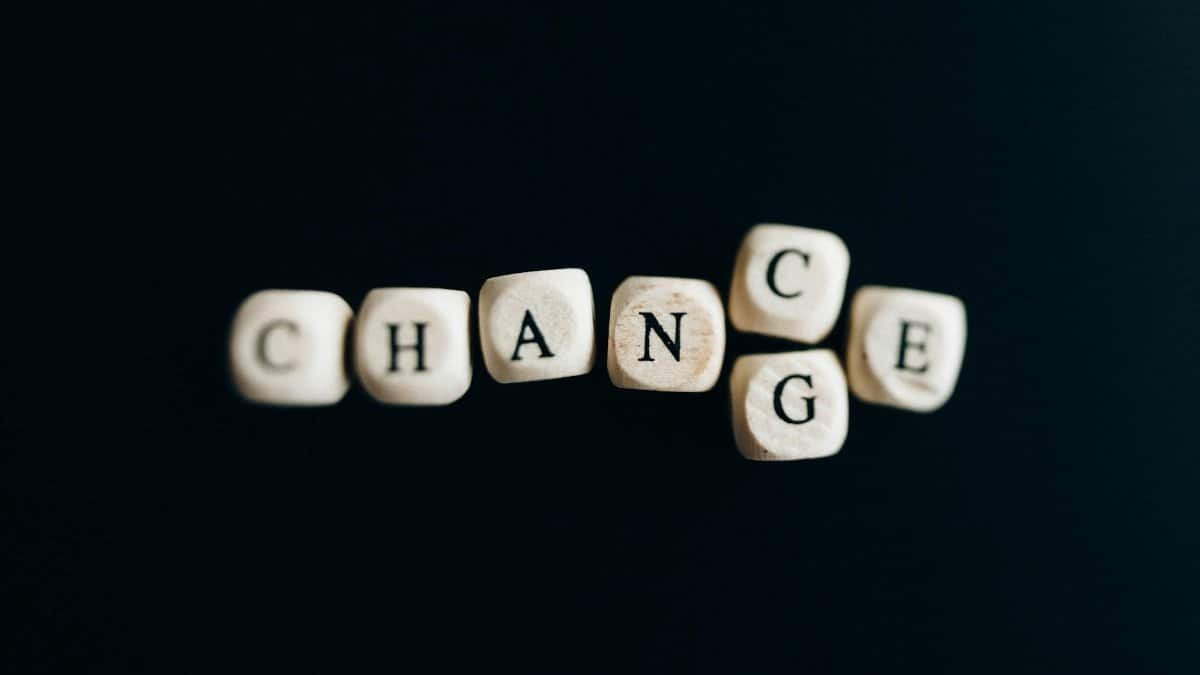A recent survey by the American Psychological Association found that 62% of adults report struggling with self-acceptance, a barrier that’s doubled since the early 2000s amid rising stress levels. This statistic underscores a quiet crisis in how Americans approach personal growth. Many chase quick fixes through apps, therapies, or self-help books, yet overlook the foundational step of healing acceptance. It’s that moment when you confront your vulnerabilities without judgment, allowing true recovery to begin. In bustling cities like New York or Los Angeles, people rush through days filled with demands, ignoring inner signals for rest and reflection. But what if embracing those signals could unlock deeper well-being? This shift isn’t just trendy; it’s essential in 2025, as mental health conversations evolve beyond surface-level advice.
The Illusion of Control

People often cling to the idea that they can micromanage their emotions. This belief persists, even when evidence shows otherwise. Take Sarah, a marketing executive in Chicago. She spent years pushing down grief from a lost job, convinced that sheer willpower would erase it. Instead, the pressure built until small tasks felt overwhelming. Psychologists point out that such resistance stems from a fear of vulnerability. When individuals finally let go, they discover freedom. A study from the University of California, Berkeley, highlights how acceptance-based interventions reduce anxiety by 40% in participants.Greater Good Science Center at UC Berkeley explores this dynamic, showing acceptance as a tool for emotional regulation. It’s not about giving up; it’s about redirecting energy wisely.
Consider the broader trend. In workplaces across the U.S., employees face burnout from constant productivity demands. One anonymous account shared publicly described the relief of admitting exhaustion: “I stopped pretending I was fine, and suddenly, solutions appeared.” This resonates with many, revealing how denial drains resources. Healing acceptance invites a pause, a breath amid chaos. It challenges the cultural narrative that strength means never faltering. Yet, as more embrace this, shifts occur. Relationships improve, creativity sparks. The key lies in recognizing control as an illusion, one that acceptance gently dismantles.
Roots in Childhood Experiences

Childhood shapes how adults view acceptance. Early messages about emotions linger, often unexamined. For instance, a child praised only for achievements might grow into an adult who equates worth with perfection. This pattern hinders healing. Experts at the National Institute of Mental Health note that unresolved childhood stress contributes to adult avoidance behaviors.NIMH on Child and Adolescent Mental Health provides insights into these long-term effects, emphasizing early intervention’s role.
Dive into a snapshot from everyday life. Imagine a family dinner in a suburban Texas home, where a parent dismisses a child’s tears as weakness. Years later, that child, now grown, struggles to accept personal setbacks. Such stories abound, illustrating the cycle. Breaking it requires reflection. Therapists encourage journaling to uncover these roots, turning awareness into action. In 2025, with therapy more accessible via telehealth, more Americans trace these origins. The process isn’t linear; it involves layers of discovery. Yet, each layer peeled back fosters genuine healing acceptance, transforming old wounds into sources of strength.
This exploration reveals tensions. Some resist delving into the past, fearing it reopens pain. Others find empowerment. The balance lies in gentle inquiry, not forceful excavation.
Barriers to Acceptance

What stops people from embracing healing acceptance? Shame tops the list, woven into societal expectations. In a culture that glorifies resilience as stoicism, admitting needs feels like failure. A Pew Research Center report on American attitudes toward mental health shows that 45% still view seeking help as a sign of weakness.Pew Research on Mental Health Trends details this stigma, particularly among older generations.
Another hurdle: distraction. Smartphones buzz with notifications, pulling attention from inner work. One person recounted in an online reflection feeling trapped in a loop of scrolling to avoid discomfort. “It was easier to numb out than face the quiet,” they shared. This avoidance delays progress. External pressures compound it, like financial stress or family obligations. In cities like Atlanta, where work-life balance tilts heavily toward work, acceptance gets sidelined. Overcoming these requires intention. Small habits, like daily check-ins, chip away at barriers. The journey demands patience, as acceptance doesn’t arrive overnight. It builds through consistent effort, revealing that barriers, once named, lose their power.
The Role of Mindfulness

Mindfulness acts as a bridge to healing acceptance. It trains the mind to observe without immediate reaction. Practices like meditation encourage sitting with discomfort, a skill many lack. Harvard Health Publishing reports that mindfulness reduces rumination, fostering self-compassion.Harvard Health on Mindfulness outlines benefits, including lowered stress hormones.
Picture a quiet morning in Seattle, where a group gathers for a guided session. One participant, initially skeptical, notices thoughts drifting to past regrets. Instead of pushing them away, they acknowledge them. This simple act sparks change. Across the U.S., apps and classes make mindfulness mainstream in 2025. Yet, it’s not a panacea. Critics argue it can feel performative without deeper integration. True impact comes when paired with action, like applying insights to daily conflicts. Mindfulness illuminates the path, making acceptance less abstract and more attainable. It shifts focus from fixing to understanding, a subtle but profound evolution.
Variations emerge in practice. Some prefer walking meditations, others breathwork. The diversity allows personalization, ensuring broader appeal.
Stories of Transformation

Real change often hides in personal tales. Consider Mark, a veteran from Ohio, who battled PTSD for years. Therapy introduced healing acceptance, teaching him to welcome emotions as visitors, not enemies. Slowly, nightmares faded. Such narratives inspire, showing possibility amid struggle.
Another layer: community support. In support groups nationwide, members share breakthroughs. One woman described her shift: “Accepting my anxiety didn’t cure it, but it stopped the war inside.” These stories, echoed in public forums, highlight common threads. A study from the Journal of Clinical Psychology found acceptance therapies lead to sustained improvements in well-being.Journal of Clinical Psychology hosts related research, underscoring evidence-based transformations.
These accounts vary. Some involve gradual progress, others epiphanies. They remind us that healing acceptance reshapes lives quietly, often without fanfare. In reflecting on them, patterns emerge: vulnerability breeds connection, fostering collective growth.
Practical Steps Forward

Starting with healing acceptance needn’t overwhelm. Begin small. Set aside five minutes daily to note feelings without judgment. This builds awareness. Books and resources abound, but action matters most.
Engage in dialogue. Talk with trusted friends about vulnerabilities. It normalizes the process. For deeper dives, consider acceptance and commitment therapy (ACT), backed by the Association for Contextual Behavioral Science.ACBS on Acceptance and Commitment Therapy offers frameworks for implementation.
Incorporate routines. Journal prompts like “What am I resisting today?” prompt reflection. Over time, these habits accumulate. In 2025, with hybrid work models, carving out space becomes easier. Yet, consistency trumps perfection. Slips happen; accept them too. This iterative approach turns theory into lived experience, making healing tangible.
Impact on Relationships

Healing acceptance ripples into connections. When individuals accept themselves, they offer others grace. Couples report fewer conflicts, as defensiveness wanes. A report from the Gottman Institute shows self-acceptance correlates with relationship satisfaction.Gottman Institute on Relationships delves into these dynamics.
Think of a New York apartment, where partners navigate tensions. One admits flaws openly, diffusing arguments. This authenticity strengthens bonds. In families, it models healthy behavior for children. Broader still, workplaces benefit from empathetic teams. Challenges arise when one person’s acceptance clashes with another’s resistance. Navigating this requires communication. Overall, the impact fosters deeper, more resilient ties, proving acceptance’s relational power.
Embracing Imperfection

At its core, healing acceptance celebrates flaws. Perfectionism plagues many, fueling endless striving. Releasing it opens doors to joy. Philosophers and psychologists alike advocate this stance.
In daily life, it means laughing at mishaps rather than criticizing. A Boston teacher shared how accepting her forgetfulness reduced stress, improving her teaching. Such shifts accumulate. As 2025 unfolds, cultural narratives evolve toward realism over idealism. Embracing imperfection isn’t resignation; it’s liberation. It allows energy for what truly matters, weaving acceptance into the fabric of existence.
This facet invites nuance. Imperfection doesn’t excuse harm, but it humanizes errors. Balancing accountability with compassion defines mature acceptance.
